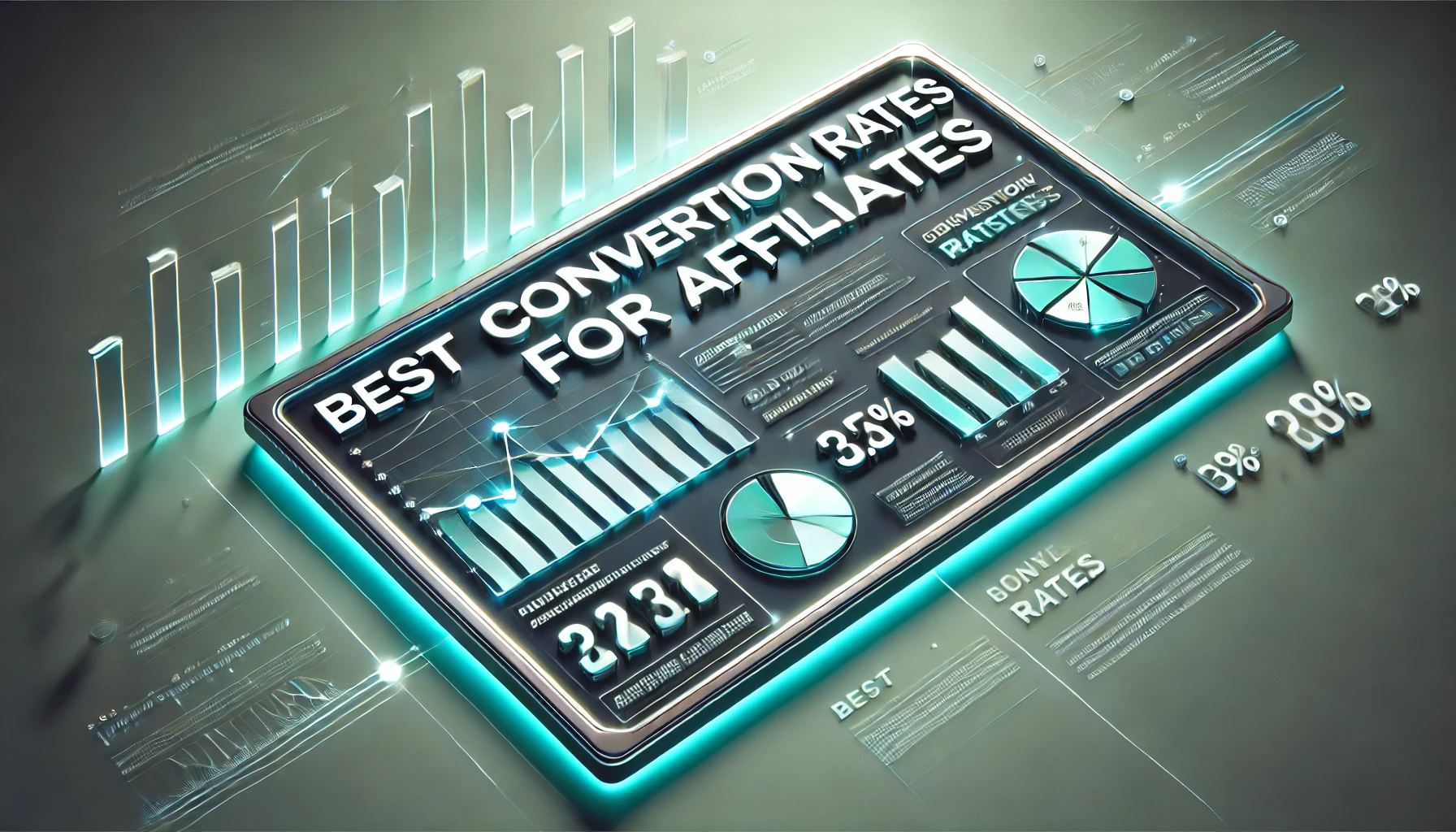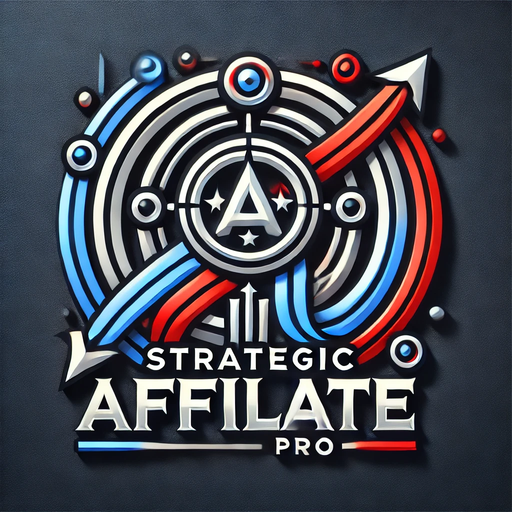Best conversion rates for affiliates aren’t just numbers on a spreadsheet; they’re like the pulse of your marketing efforts, giving you clear insights into what’s working. When we talk about optimizing these rates, it’s about seeing more returns from the time, effort, and resources you’ve put into your affiliate marketing program.
What’s all the fuss about conversion rates, you ask? They’re crucial because they tell you how effective your marketing strategies are in turning visitors into buyers. The idea is to get a bigger bang for your buck, and who doesn’t want that? With way too many factors playing into these rates, getting a handle on them can be like trying to solve a never-ending puzzle.
You’ve got your traffic source quality, your landing page’s vibe, and even how snazzy your call to action is, all influencing these rates. Think of them as dials on a control panel that you need to get just right to fly high in affiliate marketing. I mean, who knew tweaking a landing page layout could bump up your rates by so much?
Spending a little time understanding every element isn’t just wise; it’s essential if you want your efforts to actually count. Imagine no longer scratching your head over why your amazing campaign isn’t converting. It’s like finally having the manual for a complex gadget that you’ve been trying to figure out.
Defining a Good Commission Rate for Affiliates
Commission rates can feel like walking on a tightrope; you want to offer enough to entice top affiliates, but not so much that it eats into your profits. So, what constitutes a ‘good’ commission rate? Well, it hinges largely on your industry and business goals.
Different fields have varying standards for commission rates. For example, fashion might hover around 10% to 15%, while tech gadgets could be at 5% due to higher ticket prices. It’s about striking a balance and doing a bit of detective work into what your competitors are offering.
Several factors should guide your decision on commission rates. Consider the value of the product, the cost of customer acquisition, and your overall marketing strategy. It’s almost like finding a sweet spot that benefits both you and your affiliates without straining your resources.
And then there’s the idea of incentivizing performance with tiered commissions. Think of it as rewarding those affiliates who go above and beyond. It’s like saying, “You scratch my back, and I’ll scratch yours,” but with an extra few percentage points on sales.
Some real-world businesses have nailed this. Take, for instance, eCommerce platforms that tweak their rates during peak shopping seasons, like Black Friday, to capitalize on the surge in potential buyers. Learning from these pros can supercharge your approach.
Grasping the Good Conversion Rate in Affiliate Marketing
Understanding what makes a conversion rate ‘good’ is like trying to hit a moving target, partly because it varies so much by industry and product type. But let’s break it down. A good conversion rate often sails around the 2% to 5% mark, though for some sectors, even hitting 1% can mean you’re doing something right.
No need to fret if your numbers aren’t sky-high just yet. Various techniques exist to help you nudge those numbers upward. Think of this as more of an art than science. Adjusting your calls to action, refining the quality of your traffic, and even small tweaks to your site’s design can have a profound impact.
Monitoring your conversion rate against industry leaders is like having a roadmap to where you want to go. Industry benchmarks can shed some light here and guide your efforts. You wouldn’t want to set out on a road trip without GPS, right?
Stories from brands that have excelled can be a real eye-opener. Take note of how some companies have turned low conversion rates into success stories by adopting fresh, bold strategies. Real-life wins provide not just motivation but practical insights you can run with.
Membership Conversion Rates: Metrics and Milestones
Membership conversion rates can really test your marketing mettle. When it comes to subscription services, a higher conversion rate means more loyal members sticking around for the long haul, and that’s gold in the recurring revenue world.
These conversion rates matter because they tell you how well you’re convincing people to become part of your club, so to speak. It’s like working hard to turn first dates into long-term relationships. And who doesn’t love members who keep coming back?
Boosting these membership numbers can sometimes feel like alchemy, but some solid strategies can make it happen. Consider offering free trials or limited-time discounts. People love a good deal, and sometimes, the idea of being part of an exclusive group is just too good to pass up.
There’s also value in looking at how non-membership offers are performing. They can offer insights into potential adjustments needed for membership pitches. Sometimes, the tweaks needed might be hiding in plain sight.
Learning from subscription giants, who have turned users into paying members in droves, can really sharpen your strategy. Their success stories, hovered around careful tracking of user behavior and agile adaptation, can offer a blueprint for achieving sky-high membership conversions.
The Best Conversion Rate in Retail: Achieving Excellence
Retail conversion rates are a different beast altogether, standing as a critical metric that assesses how well you’re transforming simple browsers into paying customers. It’s a big deal, especially with the intense competition retail businesses face today.
Typically, a benchmark conversion rate for retail hovers around 2% to 3%, but of course, some retail wizards out there are managing to hit 5% or even higher. These standout numbers often result from a deep understanding of consumer behavior and a stellar shopping experience.
Various elements play into making these numbers soar. Think along the lines of catchy product photos, swift checkout processes, and personalized shopping experiences. Your online store should be like a virtual red carpet, welcoming and guiding customers smoothly to the checkout line.
Now, let’s talk about the rockstars of the retail world. Brands with outstanding conversion rates often excel by offering a unique mix of value, an enjoyable online experience, and precise marketing. Ever wonder how some stores just seem to know what you need? That’s them, hitting all the right notes.
Optimization starts with understanding what’s working and, just as importantly, what’s not. Using data-driven strategies like A/B testing can help uncover golden opportunities to tweak and improve. The aim? To keep those digital doors swinging with happy customers, day in and day out.
Optimizing Your Strategy: Tools and Techniques for Higher Conversion Rates
Getting those conversion rates to climb might sound challenging, but with the right tools and techniques, it’s well within reach. Think of it as having a solid toolkit; the better your tools, the easier it is to get the job done right and make your numbers shine.
Plenty of platforms out there are designed to help track and improve conversion rates. Google Analytics is a staple, but other solutions like Hotjar or Crazy Egg get you into the nitty-gritty details about user behavior. With these insights, you can make informed decisions rather than just guesswork.
And don’t underestimate the power of A/B testing. Small changes, like altering button colors or headlines, can sometimes lead to surprisingly big shifts in conversions. Testing helps you see what really clicks with your audience, removing the mystery from your efforts.
Never forget the role of user experience in this mix. A smooth, intuitive site can dramatically boost conversion rates. It’s like rolling out the welcome mat and ensuring everything from browsing to payment is a pleasant experience.
Data analytics plays a critical role, offering a clear picture of where you stand and what needs improvement. By diving into the data, you’ll gain insights that enable strategic decisions, ultimately leading to more effective marketing tactics and satisfied customers.

Conclusion: Driving Growth Through Optimal Conversion Strategies
Mastering the art of conversion is kind of like learning a complex song on the guitar. There’s nuance, practice, and a little bit of improvisation involved. But once you hit those optimal conversion rates, the rewards are worth all the effort.
It’s all about continuously tweaking and refining your approach. Keep an eagle eye on your metrics, and be ready to pivot when the data suggests something isn’t syncing up like it should. This ongoing process is what will keep your marketing efforts vibrant and impactful.
The pursuit of the best conversion strategy is a journey that combines creativity with analytical thinking. Be it through the clever use of tools to peek into user behavior or by perfecting that seamless customer journey, every step counts.
Ultimately, it’s about crafting experiences that resonate and building relationships with your audience. That’s where the true growth lies. By focusing on understanding and serving your audience well, you’ve got a recipe for success.
Consider every section here not just a standalone tip but part of a larger strategy that, when combined, can turn your conversion aspirations into reality. Let’s keep those conversion rates soaring!
Enjoyed this article? Let’s continue the conversation on LinkedIn.

